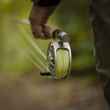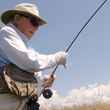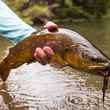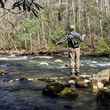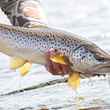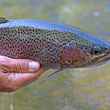Ten years ago, my wife and I often went on long backcountry hiking trips with just some quickie planning. These days with 3 1/2 year old and 16 month old boys, we do more quickie trips with long planning time. When I first started fly fishing in the backcountry areas of Yellowstone National Park and the Sawtooths of Idaho, I could basically just tell my wife the when’s, who’s, and how’s of a trip and be on my way to paradise. That freedom has turned into clearing everyone’s schedules of many different other who’s and when’s to make clearance for us (on a side-note, the second or third Saturday in September is always reserved for some action on the Lamar River in Yellowstone National Park and nothing can remove that day).
So, here we are trying to figure out how to get back into fun and fishing in the backcountry, or as close as possible to it, now that one of the kids can walk a couple of miles each way. Our quickie-trips are generally a half-day scheduled around nap time, and the extended planning effort requires diapers, multiple snacks, safety considerations, and a couple of toys if we’re feeling energetic enough to carry them. The focus of effort is generally keeping the boys happy rather than hoping the fish take some fake food, but that’s how it is as parents of toddlers.




